Peak Climbing in Nepal
Exploring places, understanding the lifestyle of people and visiting places with spectacular Himalayan views and a thrill of the mountains is possibly the best adventure choice of many adventure seekers.
Exploring places, understanding the lifestyle of people and visiting places with spectacular Himalayan views and a thrill of the mountains is possibly the best adventure choice of many adventure seekers.

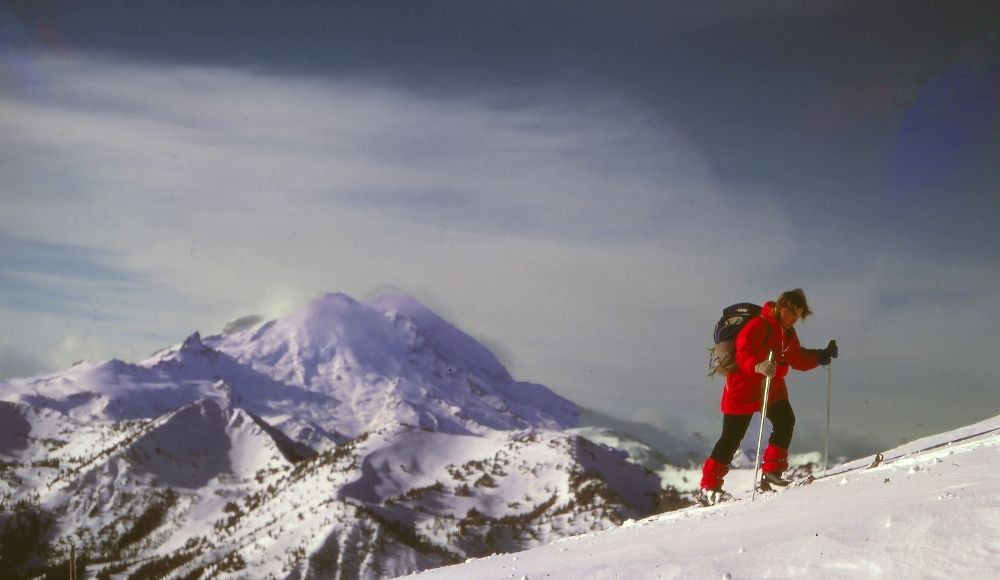
Nepal, a small but diverse country nestled in the heart of the Himalayas, offers some of the most spectacular and challenging peak climbing experiences in the world. With eight of the world's fourteen 8,000-meter peaks, including the famed Mount Everest, Nepal has been attracting adventure-seekers and mountaineers from across the globe for decades. In this blog post, we will provide you with a comprehensive guide to peak climbing in Nepal, helping you prepare for the adventure of a lifetime.
Proper planning and preparation are crucial when attempting to conquer these majestic peaks. The importance of physical fitness, appropriate equipment, acquiring the necessary permits, and selecting a reputable trekking agency cannot be overstated. By ensuring that every aspect of your journey is well-organized and meticulously planned, you will maximize your chances of success and create an unforgettable experience.
Throughout this post, we will cover various aspects of peak climbing in Nepal, including:
An overview of the most popular peaks and climbing seasons
How to prepare physically and mentally for peak climbing
Choosing the right gear and equipment for your climb
Acquiring the necessary permits and documentation
Finding a reputable trekking agency and guide
Health and safety considerations, including altitude sickness and emergency procedures
Tips for responsible and sustainable climbing practices
By the end of this comprehensive guide, you will be well-equipped with the knowledge and insight needed to embark on your peak climbing adventure in Nepal, ready to conquer the breathtaking beauty and challenge of the majestic Himalayan peaks.
Understanding Peak Climbing in Nepal involves getting acquainted with the diverse types of peaks, ranging from trekking peaks to challenging technical climbs. The best seasons for peak climbing are pre-monsoon (March to May) and post-monsoon (September to November), when weather conditions are more favorable. Acquiring necessary permits and adhering to regulations are crucial to ensure a legal and responsible expedition. Familiarizing yourself with the unique aspects of peak climbing in Nepal will not only help you make informed decisions but also pave the way for a safe and memorable adventure.
Nepal's peaks can be broadly categorized into three groups, based on their elevation and technical difficulty:
Trekking Peaks: These peaks range from 5,000 to 6,500 meters in elevation and are relatively less challenging, often not requiring technical climbing skills. They are ideal for novice climbers or those looking to gain experience before attempting higher peaks. Popular trekking peaks include Island Peak, Mera Peak, and Lobuche East.
Technical Peaks: These peaks have elevations between 6,500 and 7,000 meters and require advanced mountaineering skills, including proficiency in using climbing gear and navigating difficult terrains. Climbers looking to test their skills on technical peaks can opt for Ama Dablam, Baruntse, or Himlung Himal.
8,000-meter Peaks: Nepal is home to eight of the world's fourteen 8,000-meter peaks, also known as the "eight-thousanders." These peaks are the ultimate challenge for mountaineers, demanding not only technical expertise but also exceptional physical fitness and mental resilience. Some of the most famous 8,000-meter peaks include Mount Everest, Kanchenjunga, Lhotse, and Annapurna.
The best seasons for peak climbing in Nepal are pre-monsoon (March to May) and post-monsoon (September to November). During these periods, the weather is generally stable, with clear skies and moderate temperatures, offering optimal climbing conditions. Winter (December to February) can also be suitable for some peaks, but the extreme cold and heavy snowfall may pose additional challenges. Monsoon season (June to August) is generally not recommended for peak climbing due to poor visibility, slippery trails, and increased risk of landslides.
Peak climbing in Nepal requires obtaining permits and adhering to specific regulations. The permits you need will depend on the peak you intend to climb, the season, and the route you plan to take. Some of the most common permits include:
Trekking Peak Permit: Issued by the Nepal Mountaineering Association (NMA), this permit is required for climbing trekking peaks. The cost depends on the peak and the climbing season.
Expedition Royalty: Climbers attempting technical peaks or 8,000-meter peaks must pay an expedition royalty to the Ministry of Culture, Tourism and Civil Aviation. The royalty fee varies based on the peak's elevation and the size of the climbing team.
National Park or Conservation Area Entry Permit: Most of the peaks are located within national parks or conservation areas, requiring an entry permit, which can be obtained either at the park entrance or in Kathmandu.
Trekker's Information Management System (TIMS) Card: Independent trekkers need a TIMS card for trekking in Nepal. However, if you are climbing with a registered trekking agency, they will arrange the necessary permits and documentation on your behalf.
Always ensure you have the necessary permits and follow regulations to avoid fines, penalties, or deportation.
Choosing the right peak for your adventure in Nepal requires careful consideration of your fitness level and climbing experience. Comparing popular peaks like Island Peak, Mera Peak, Lobuche East, and Pisang Peak, among others, can help you identify which peak aligns best with your skills and preferences. Engaging in thorough research, consulting with experienced climbers or trekking agencies, and assessing your capabilities will ensure you select the most suitable peak for a successful and enjoyable climbing experience.
Selecting the appropriate peak for your climbing adventure is crucial to ensure a successful and enjoyable experience. Your choice should be based on your current fitness level, prior climbing experience, and personal goals. Here are some key factors to consider when choosing the right peak for you:
Physical Fitness: Climbing peaks in Nepal can be physically demanding, requiring a high level of endurance, strength, and cardiovascular fitness. Assess your current fitness level and select a peak that matches your abilities. Trekking peaks are a good starting point for beginners, while experienced climbers can opt for more challenging technical peaks or 8,000-meter peaks.
Climbing Experience: Consider your previous climbing experience and technical skills. If you are new to mountaineering, it's wise to start with a trekking peak or take a mountaineering course to learn essential techniques before attempting more challenging climbs. For those with prior climbing experience, selecting a peak that offers a step up in difficulty can help you build on your existing skills and gain confidence.
Time Commitment: The duration of your climbing adventure will vary depending on the peak you choose. Trekking peaks can typically be climbed within 2-3 weeks, while technical peaks and 8,000-meter peaks often require 4-8 weeks or more. Consider your available time and choose a peak that fits your schedule.
Budget: The cost of peak climbing in Nepal can vary significantly depending on the peak, duration, and services you require. Trekking peaks tend to be less expensive, while technical peaks and 8,000-meter peaks involve higher costs due to additional permits, gear, and logistical support. Assess your budget and select a peak that aligns with your financial constraints.
Personal Goals and Interests: Your personal goals and interests should also play a role in selecting the right peak for your adventure. Consider what you hope to achieve, whether it's pushing your physical limits, gaining experience for future climbs, or simply immersing yourself in the breathtaking beauty of the Himalayas. Your choice should reflect your aspirations and passions.
By carefully assessing your fitness level, climbing experience, time constraints, budget, and personal goals, you can choose the perfect peak for your adventure in Nepal, ensuring a safe, enjoyable, and rewarding experience.
Comparing popular peaks in Nepal involves examining factors such as difficulty, altitude, technical requirements, and scenic appeal. Some of the well-known peaks include Island Peak, known for its accessibility and non-technical nature; Mera Peak, offering stunning panoramic views of Himalayan giants; Lobuche East, combining trekking and mountaineering; and Pisang Peak, with its moderately challenging climb and picturesque vistas. By analyzing the unique features of these peaks and others, climbers can make informed decisions about which peak best suits their skill level, interests, and adventure goals.
Island Peak, also known as Imja Tse, is a popular trekking peak situated in the Everest region. It offers a moderately challenging climb that is perfect for novice mountaineers looking to gain experience. Climbers can also enjoy spectacular views of Everest, Lhotse, and Ama Dablam. The typical route involves trekking through the famous Everest Base Camp before ascending Island Peak, making it an ideal choice for those looking to combine a classic trek with a peak climbing experience.
Mera Peak, located in the Makalu Barun National Park, is the highest trekking peak in Nepal. It offers climbers a non-technical but physically demanding ascent, requiring good fitness and stamina. The summit provides breathtaking panoramic views of five 8,000-meter peaks, including Everest, Lhotse, Cho Oyu, Makalu, and Kanchenjunga. The approach to Mera Peak involves trekking through remote and pristine valleys, offering a unique, off-the-beaten-path experience.
Lobuche East is another popular trekking peak in the Everest region. It is considered slightly more challenging than Island Peak due to its steeper slopes and exposed sections, requiring basic technical skills and the use of climbing equipment. The climb offers stunning views of Everest, Lhotse, Nuptse, Ama Dablam, and Pumori. Like Island Peak, the approach to Lobuche East typically includes trekking through the Everest Base Camp.
Pisang Peak lies in the Annapurna region and offers a moderately challenging climb for those with some mountaineering experience. It requires basic technical skills, as climbers will need to navigate steep snow slopes and a few rocky sections. The summit offers breathtaking views of Annapurna, Dhaulagiri, Manaslu, and Gangapurna. The approach to Pisang Peak includes trekking through the popular Annapurna Circuit, allowing climbers to experience the diverse landscapes and cultural richness of the region.
Nepal is home to numerous other peaks that cater to climbers of varying experience levels. Some of these peaks include:
Ama Dablam (6,812m) - A technical peak in the Everest region, known for its stunning beauty and challenging climb, suitable for experienced climbers.
Chulu East (6,584m) and Chulu West (6,419m) - A pair of trekking peaks in the Annapurna region, offering a moderate challenge for climbers with some experience.
Dhampus Peak (6,012m) - A trekking peak located in the Dhaulagiri range, ideal for novice climbers looking for a less crowded climbing experience.
Yala Peak (5,732m) - A relatively easy trekking peak in the Langtang region, suitable for those with little to no mountaineering experience.
By comparing the features, difficulty, and location of these popular peaks, you can select the one that best aligns with your experience, interests, and goals for your peak climbing adventure in Nepal.
Island peak is another mountain in Nepal worth climbing. It is one of the best mountain peaks that is utterly climbed and gained some popularity and insights on the Himalayan terrains in the Himalayas of Nepal. The trek to Island peak starts from the Imja Valley by following the traditional trekking trail of Mount Everest from Lukla to Dingboche. The trail then deviates towards Chuckung. The wilderness of trekking is the epitome of adventure in this softcore mountaineering which is probably the best thing while choosing a mountain peak to climb in Nepal.
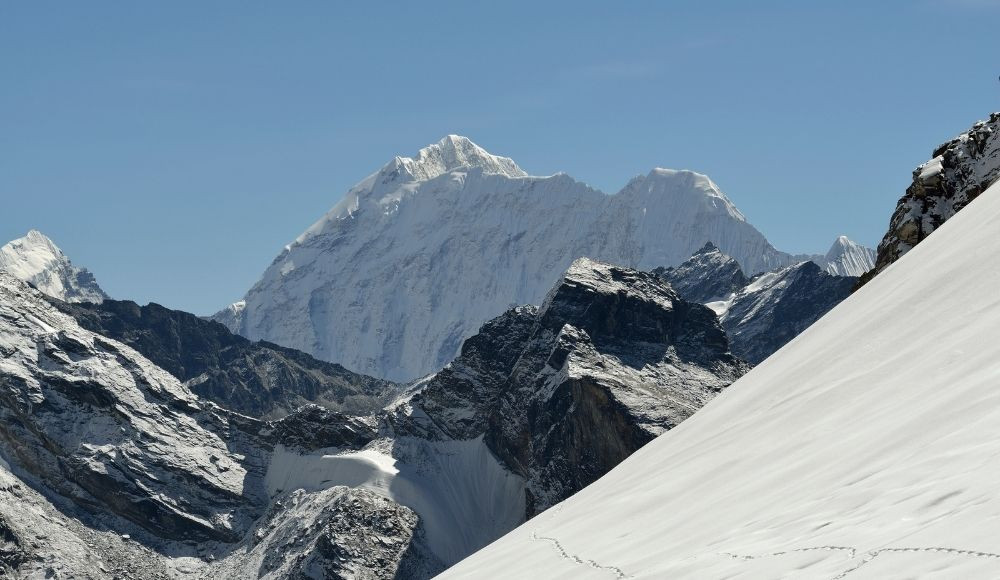
The Island peak lies at an altitude of 6189 m above sea level making it a perfect choice to climb. This ideal mountain peak is highly popular and admired for its climbing difficulties and assorted experiences. Some previous mountaineering experience helps the climbing process to Island Peak. Imja Tse climbing is one of the best experiences in Nepal that facilitates you to explore the Himalayas of the Everest region.
Mera peak is a popular name when it comes to peak climbing in Nepal. It is a small but adventurous off beat peak offering diverse experiences in the Himalayan mediocre and the epitome of the mountains. It is in the Mahalangur Range, especially in the Sagarmatha region significantly renowned for peak trekking. Situated at an altitude of 6476 m above sea level, this peak was initially explored by the first Everest expedition team.
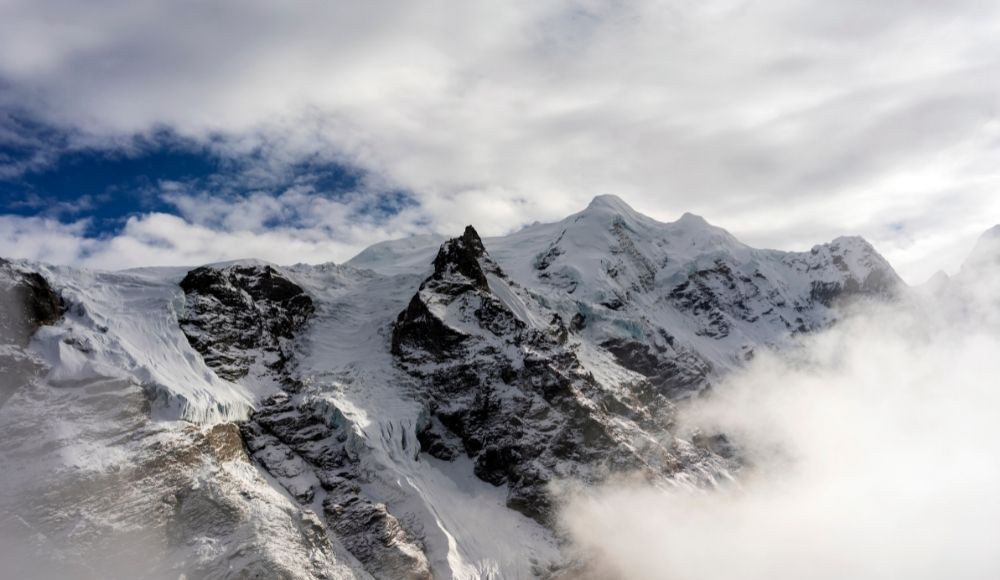
Edmund Hillary, Tenzing Norgay, Eric Shipton and George Lowe explored this peak in the early 50s. The standard climbing route of Mera Peak involves the route from Northern Part with high altitude glacier walking. Some of the popular mountains visible from Mera Peak are Mount Everest, Lhotse, Cho Oyu, Makalu, and Kangchenjunga. The experienced trekkers and mountaineers can reach the summit in a straightforward way with some technical understandings. However, for non-risk takers, the northern way is easier to reach the top of Mera Peak.
The altitude of the Lobuche peak is 6119 m above sea level. The breathtaking and panoramic views of the Everest region from the Lobuche peak fascinates you with the diverse experiences and wonderful adventure in the Himalayas of Nepal. The impressive monasteries and the Sherpa lifestyle in the Everest region have way more to offer. The astounding beauty of the Himalayas and awe-inspiring views of some eight-thousanders offers mind-blowing experiences.

The Lobuche peak offers two summits, Lobuche East and West with a little altitude variation. The east peak is popular as a trekking peak whereas the west peak is popular for the expedition. The route to Lobuche involves that of the Everest Base Camp trek route. With some glaciers and amazing trekking experience with the world’s highly revered Everest Base Camp, it will undoubtedly give the lifetime memories.
Pisang peak lies in the Annapurna region of Nepal and is revered for its wonderful beauty. Climbing this peak is one of the best parts of peak climbing in Nepal. The mindblowing views of Annapurna, Tilicho and Gangapurna during the trek to Pisang are spectacular. Also, the magnificent views of Annapurna ranges, Dhaulagiri and the other Himalayas from the summit of Pisang peak are worth experiencing in Nepal.

Pisang peak lies at an altitude of 6091 m above sea level. It is an ideal selection if you want to climb a peak with a little low altitude. The beautiful Jomsom region from Pisang is also another beautiful part of the trek. The mind-blowing culture and lifestyle of local people during the trek is the best experience.
Chulu West Peak is another popular mountain for peak climbing in Nepal. It is a part of Manag Himal at an altitude of 6419 m above sea level. The finest combination of Mesokanta la and thrilling Marshyangdi Khola is admirable and worth an experience. The Hunlung Khola, Nar Khola and Phu Khola are also part of the trek to Chulu West Peak. It is a fascinating peak that has so many things to offer.
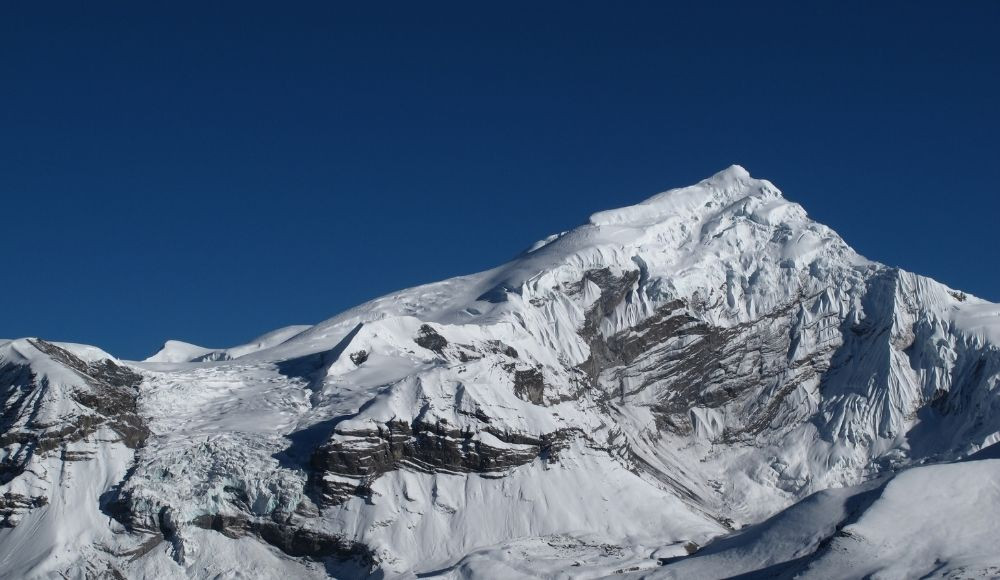
You get to experience the wonderful floral and faunal spectrums during the trek and the wonderful Damodar Himal in the boundary is, of course, an added advantage. The culture and lifestyle of local people in Manang is another best experience this peak has to offer. Trekking to Manang is one of the best off the beaten trek to the beauty. And climbing this peak will add some essence to it.
Yala Peak is situated at an altitude of 5732 m above sea level in the Langtang region of Nepal. A relatively easier and short duration trek to the land of amazing beauty will give you some astounding experiences in Nepal. The cultural richness of the Langtang region and unparalleled trekking experience with the best combined Yala peak climbing. The Langtang and Ganesh Himal ranges are the major attraction of Yala Peak. The glacial beauty of Langtang is another thing that it has to offer. There are more than 70 small and big glacial lakes in the Langtang region of Nepal making it the perfect spot for the Himalayan adventure. The stunning views of Lantang Lirung (7246m), Lenpo Gang 7083m), Dorje Lakpa (6990 m) and mighty Shishapangma (8027 m) from Yala Peak are astounding and probably the best part of climbing this peak.
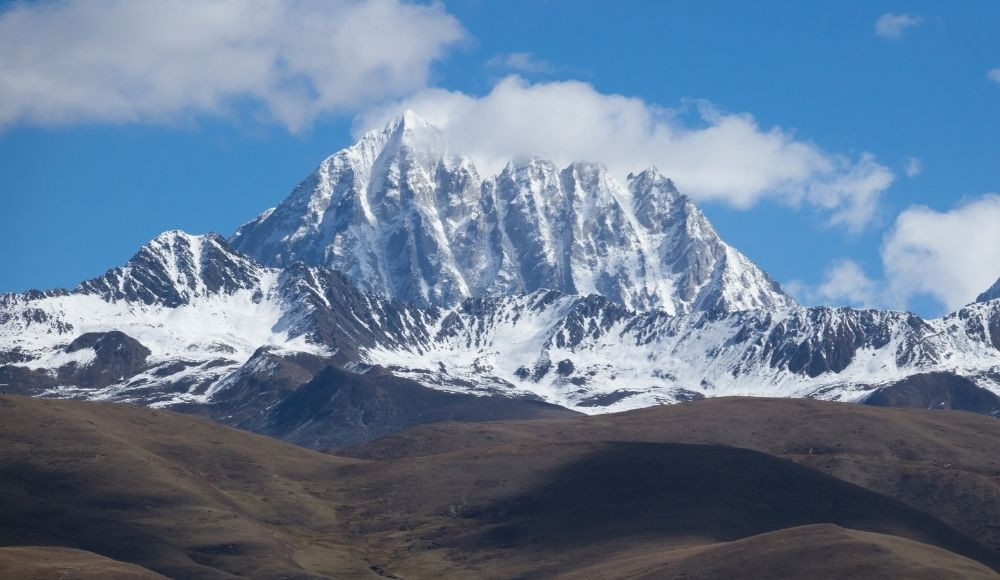
The unique fusion of Gompas, glaciers and mountains in the Langtang is the living heritage. The lifestyle and culture of locals is another best part of getting to the Langtang region of Nepal. Yak grazing meadows and the wonderful valley with a combination of legendary Langtang national park provokes the best lifetime experiences in Nepal.
Dhampus peak is situated at an altitude of 6012 m above sea level. It lies in the Dhaulagiri region of Nepal with the thrill of Kaligandaki in the bottom and Dhampus at the top. It is a comparatively easy trekking peak in Nepal. The spectacular Himalayan views of Tukuche Peak (6920m), Nilgiri (6940m), Tukche Peak (6920m), Tilicho peak (7134m), Hongde peak (6556m), Tsarste (6347m), Thorong Peak (6484m), Dhaulagiri (8167m), Dhaulagiri I (8163m), Sita Chuchura (6611m), Yakawa Kan (6482m), Puth Hiunchuli (7246m), Mukut Himal (6639m), Tangu Peak (6197m) and many other neighbouring mountains are the best part of climbing Dhampus peak in Nepal.
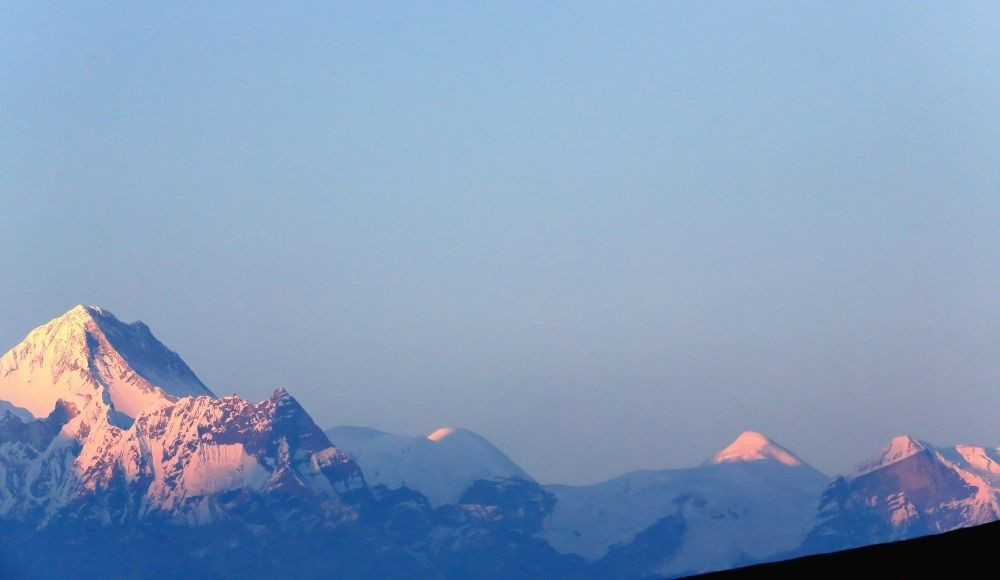
Climbing Dhampus peak can be an ideal choice if you want to explore the magnificent Himalayas of Annapurna region. Furthermore, the culture and lifestyle of local people in the mountainous region of Nepal also give you some insights on the way of living with the thrilling adventure.
Scout peak is named after Lord Baden Powell, the founder of Scout worldwide. It is a mushroom-shaped mountain peak that offers magnificent views of the neighbouring Himalayas. The wonderful views of some of the mountains such as Langtang II, Langtang Lirung, Dorje Lakpa and Shishapangma are the best part of Scout Peak.

Scout Peak lies at an altitude of 5718 m above sea level. This mountain is named after Scout to support the centenary celebration of Scout. The trail to get into Scout Peak is off the beaten trail that has so much of pristine beauty. The typical rural village lifestyle and the culture are the major things to explore during the trek and you will also get into the legendary Langtang National Park of Nepal.
Tukuche Peak combines the trekking of the Dhaulagiri region in western Nepal. This peak is situated at an altitude of 6920 m above sea level and provides the wonderful beauty of Annapurna massif and other mountains in the Annapurna region of Nepal. The thrilling beauty of the Kaligandaki river is amusing and the culture, lifestyle and flora, fauna are the best part of trekking to Tukuche peak.
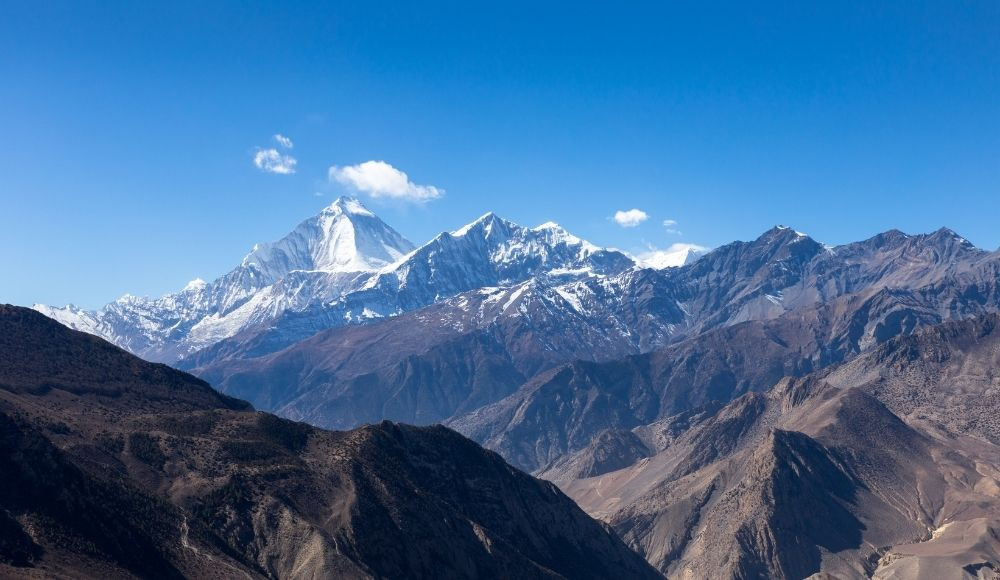
While getting to Tuckuche, you will get a wonderful chance to cross some high passes which include Thapa Pass, French Pass, Italian Base Camp and Dhaulagiri Base Camp. The remote trekking to the pristine and rural settlement of Nepal fascinates you with living insights.
Thorang peak lies above the world popular Thorang La pass in Nepal. Situated at an altitude of 6100 m above sea level, Thorang peak is the best adventure in this region. The spectacular Himalayan beauty from the top of Thorang peak is amusing and worthwhile. It is a little harder and requires some previous knowledge and technical assistance to climb this peak.
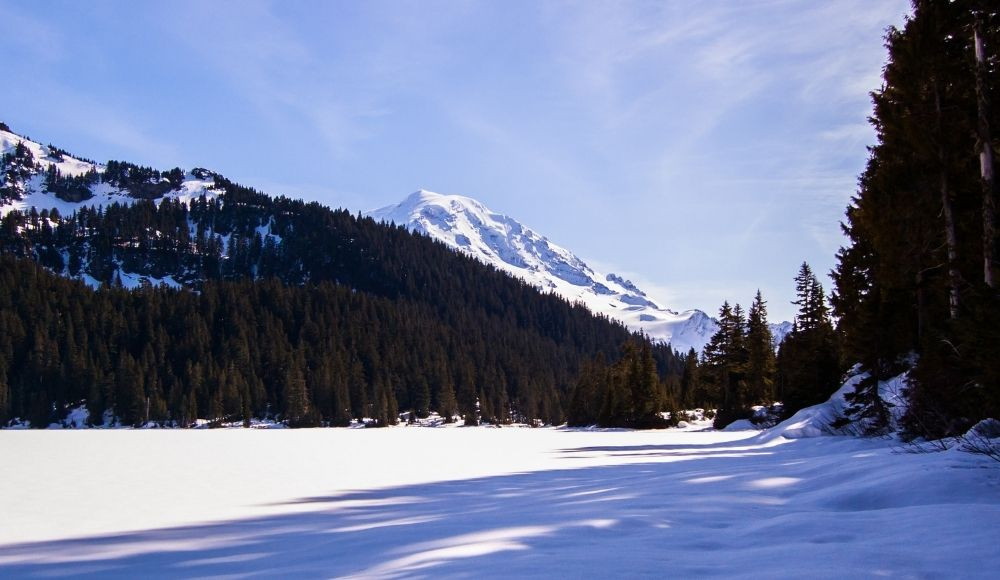
Thorang peak provides the finest adventure with the spectacular views of neighbouring mountains in the Annapurna region of Nepal. The sight of the snowcapped Himalayas and the wonderful natural spectrums spreading throughout the region is one of the best experiences you will ever get. The culture and lifestyle of local people, uniquely blended with the rural beauty and natural settlement are the best things to explore in this region.
The Tent Peak, also known as Tharpu Chuli lies south of Annapurna Base Camp. This is also one of the best mountains to climb and best suitable for peak climbing in Nepal. While getting to the peak, you can explore the lifestyle and culture of local people. And the delicacies they have to offer. Tent peak offers spectacular views of Annapurna mountains and neighbouring peaks.
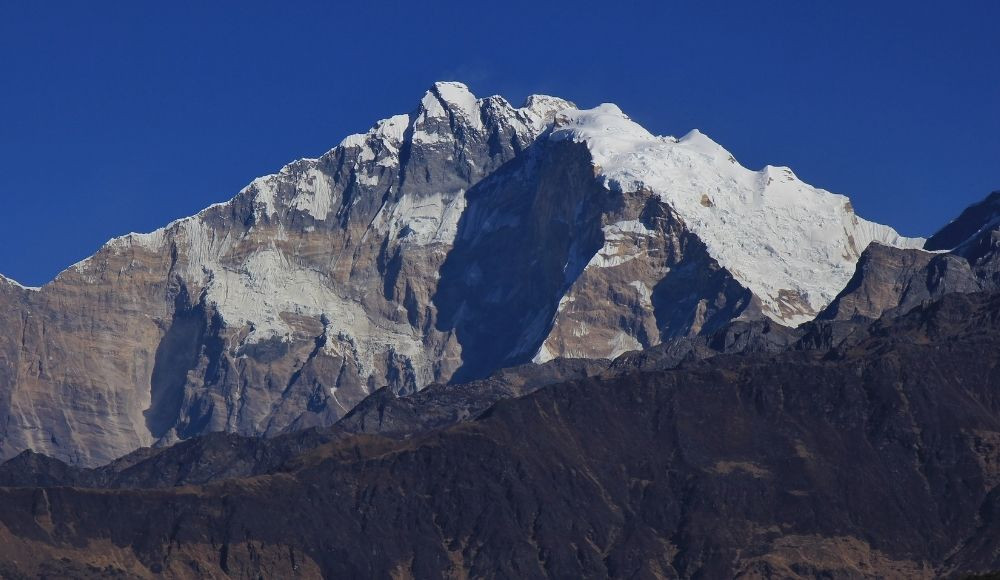
This peak is gaining popularity as it is easier to climb and situated at an altitude of 5663 m. above sea level. Though the altitude is comparatively lower than others, you can have some mindblowing panoramic views of the mountains and the wonderful Himalayas from the top of the Tent peak in Nepal.
Peak climbing in Nepal is popular as you get to explore the most beautiful and fascinating experiences in Nepal. The expedition requires a lot of effort and physical fitness but climbing peaks are comparatively easier. Neal boasts the many Himalayas and some of the most prominent and fascinating peaks in its base. It has been highly revered for its wonderful settlement and the mindblowing sceneries in the Mountain settlement. Explore the culture, traditions and lifestyle of the locals while traversing the adventurous peaks in the Himalayan region.
Peak Climbing in Nepal is gaining popularity with the growing interest of adventure seekers. The permits for peak climbing comes under the Nepal Mountaineering Association. It has classified the peaks into different groups and surcharges are applied. The peaks and their fee to climb in Nepal for foreigners is as follows. (Source: TAAN, NMA)
| S.N | Name of the peak | Region | Height | Permit Fee (In US dollars) | |||
| Spring | Autumn | Winter | Summer | ||||
| (March-April-May) | (Sept-Oct-Nov) | (Dec-Jan-Feb) | (June-July-Aug) | ||||
| 1 | Cholatse | Khumbu | 6423m | 250 | 125 | 70 | 70 |
| 2 | Kyazo Ri | Mahalangur | 6151m | 250 | 125 | 70 | 70 |
| 3 | Phari Lapcha | Mahalangur | 6159m | 250 | 125 | 70 | 70 |
| 4 | Nirekha | Mahalangur | 6169m | 250 | 125 | 70 | 70 |
| 5 | Langsisa Ri | Jugal | 6412m | 250 | 125 | 70 | 70 |
| 6 | Obmigaichen | Mahalangur | 6340m | 250 | 125 | 70 | 70 |
| 7 | Bokta | Kanchenjunga | 6114m | 250 | 125 | 70 | 70 |
| 8 | Chekigo | Gaurishankar | 6121m | 250 | 125 | 70 | 70 |
| 9 | Lobuje West | Khumbu | 6135m | 250 | 125 | 70 | 70 |
| 10 | Larkya Peak | Manaslu | 6416m | 250 | 125 | 70 | 70 |
| 11 | ABI | Mahalangur | 6043m | 250 | 125 | 70 | 70 |
| 12 | Yubra Himal | Langtang Himal | 6048m | 250 | 125 | 70 | 70 |
| S.N | Name of the peak | Region | Height (In Meters) | Permit Fee (In Nepali Rupees) | |||
| Spring | Autumn | Winter | Summer | ||||
| (March-April-May) | (Sept-Oct-Nov) | (Dec-Jan-Feb) | (June-July-Aug) | ||||
| 1 | Hiunchuli | Annapurna Himal | 6423 | 250 | 125 | 70 | 70 |
| 2 | Singhu Chuli (Fluted Peak) | Annapurna Himal | 6501 | 400 | 200 | 100 | 100 |
| 3 | Mera Peak | Khumbu Himal | 6470 | 250 | 125 | 70 | 70 |
| 4 | Kusum Kangru | Khumbu Himal | 6360 | 250 | 125 | 70 | 70 |
| 5 | Kwangde | Khumbu Himal | 6011 | 250 | 125 | 70 | 70 |
| 6 | Chulu West | Manang | 6419 | 250 | 125 | 70 | 70 |
| 7 | Chulu East | Manang | 6584 | 400 | 200 | 100 | 100 |
| 8 | Imja Tse(Island Peak) | Khumbu Himal | 6160 | 250 | 125 | 70 | 70 |
| 9 | Pharchamo | Rolwaling Himal | 6187 | 250 | 125 | 70 | 70 |
| 10 | Lobuje | Khumbu Himal | 6119 | 250 | 125 | 70 | 70 |
| 11 | Ramdung | Rolwaling Himal | 5925 | 250 | 125 | 70 | 70 |
| 12 | Pisang Peak | Manang | 6091 | 250 | 125 | 70 | 70 |
| 13 | Khongma Tse | Khumbu Himal | 5849 | 250 | 125 | 70 | 70 |
| 14 | Ganja-la Chuli | Langtang Himal | 5844 | 250 | 125 | 70 | 70 |
| 15 | Paldor Peak | Langtang Himal | 5896 | 250 | 125 | 70 | 70 |
Climbers will not have to pay any permit fee for following NMA peaks
| S.N | Name of the Peak | Height | Region |
| 1 | Tharpu Chuli (Tent Peak) | 5695m | Annapurna Himal |
| 2 | Mardi Himal | 5553m | Annapurna Himal |
| 3 | Yala Peak | 5732m | Langtang Himal |
| 4 | Chhukung Ri | 5833m | Mahalangur |
| 5 | Machhermo | 5559m | Mahalangur |
| 6 | Pokhalde | 5780m | Khumbu Himal |
Preparing for your expedition is a crucial aspect of peak climbing in Nepal, which entails a well-planned training and fitness regime to build physical strength and endurance. Acclimatization and altitude sickness prevention are vital to ensure a safe and successful climb. Obtaining necessary permits and abiding by regulations helps you stay compliant with local laws. Additionally, hiring a guide and/or porter can greatly enhance your climbing experience and improve your chances of success. By focusing on thorough preparation, you lay the foundation for a safe, enjoyable, and rewarding adventure in the majestic Himalayas.
Preparing for a peak climbing expedition in Nepal requires dedication to a structured training and fitness regime. Ideally, you should start training at least 6 months before your expedition. Your training should focus on:
Cardiovascular Fitness: Engage in regular aerobic exercises such as running, cycling, or swimming to improve your stamina and endurance.
Strength Training: Focus on exercises that target your legs, core, and upper body, as these muscle groups are essential for climbing. Squats, lunges, and core exercises like planks are particularly helpful.
Flexibility: Stretching regularly can help prevent injuries and increase your overall mobility during the climb.
Hiking and Trekking: Include hikes or treks with a weighted backpack in your training regime to simulate the conditions you'll face during your expedition. This will help you become accustomed to walking long distances with heavy loads.
Altitude Training: If possible, incorporate high-altitude training or hikes to help your body acclimatize to reduced oxygen levels.
Proper acclimatization is crucial to prevent altitude sickness during your expedition. Here are some tips to help you acclimatize effectively:
Climb High, Sleep Low: Follow the principle of climbing high and sleeping low to help your body adapt to altitude changes gradually.
Slow and Steady Ascent: Avoid rapid ascents and maintain a slow, steady pace during your climb. This allows your body to adapt to the reduced oxygen levels.
Hydration: Staying well-hydrated can help prevent altitude sickness. Aim to drink at least 3-4 liters of water per day.
Rest Days: Schedule rest days during your trek and climb to give your body time to recover and acclimatize.
Know the Symptoms: Be aware of the symptoms of altitude sickness, such as headache, nausea, dizziness, and fatigue. If you experience any of these symptoms, inform your guide and take appropriate action, such as descending to a lower altitude.
As mentioned earlier, permits are required for peak climbing in Nepal. Ensure you have obtained all necessary permits before embarking on your expedition. Consult with your trekking agency or guide to help you acquire the appropriate permits for your chosen peak.
Hiring a professional guide and/or porter is highly recommended for a safe and successful peak climbing expedition. A knowledgeable guide can help you navigate the challenging terrain, provide valuable insights about the region, and ensure you follow the correct acclimatization schedule. Porters can carry your heavy gear, allowing you to focus on the climb and conserve energy. When hiring a guide or porter, make sure they are experienced, licensed, and affiliated with a reputable trekking agency.
Essential gear and equipment for peak climbing in Nepal encompass a range of items designed to ensure safety, comfort, and convenience during your expedition. Clothing and footwear should be appropriate for the weather and altitude, while specialized climbing gear is required for tackling technical terrain. Camping equipment and first aid supplies are necessary for overnight stays and emergencies. Gadgets and accessories, such as headlamps, GPS devices, and trekking poles, further enhance your experience and help you navigate challenging conditions. Properly equipping yourself with the right gear contributes to a successful, enjoyable, and memorable climbing adventure.
Proper clothing and footwear are crucial for comfort and safety during your peak climbing expedition. Ensure you have the following items:
Base Layers: Moisture-wicking, quick-drying, and breathable base layers for both your upper and lower body to help regulate your body temperature.
Insulating Layers: Fleece or down jackets and pants to provide insulation and warmth in cold conditions.
Outer Layers: Waterproof and windproof jackets and pants to protect you from rain, snow, and wind.
Undergarments: Quick-drying and moisture-wicking underwear and sports bras.
Socks: Warm and moisture-wicking trekking and mountaineering socks.
Gloves: Lightweight gloves for trekking and insulated, waterproof gloves or mittens for climbing.
Hats: A sun hat or cap for sun protection and a warm, insulating hat or balaclava for cold conditions.
Footwear: Sturdy, waterproof trekking boots with good ankle support and insulated, rigid mountaineering boots for climbing. Gaiters can be helpful to keep snow and debris out of your boots.
The climbing gear you need will depend on the peak and its technical requirements. Some essential climbing gear includes:
Harness: A comfortable, adjustable climbing harness.
Carabiners: Locking and non-locking carabiners for securing yourself and your gear.
Belay Device: A belay device for managing the rope during climbing and rappelling.
Ice Axe: A suitable ice axe for climbing on snow and ice.
Crampons: Crampons that fit your mountaineering boots for added traction on icy terrain.
Helmet: A lightweight, well-ventilated climbing helmet to protect your head from falling rocks and ice.
Rope: A climbing rope of the appropriate length and diameter for your expedition.
Ascenders and Descenders: Devices for ascending and descending fixed ropes, if required for your climb.
Camping equipment is necessary for multi-day expeditions. Essential items include:
Tent: A sturdy, four-season tent suitable for high-altitude conditions.
Sleeping Bag: A warm, high-quality sleeping bag rated for the lowest temperatures you expect to encounter.
Sleeping Pad: An insulating sleeping pad to provide cushioning and insulation from the ground.
Stove and Cookware: A lightweight, portable stove and cookware for preparing meals at higher altitudes.
Water Purification: Water purification tablets or a water filter to ensure a safe water supply.
A well-stocked first aid kit and emergency supplies are essential for any peak climbing expedition. Some important items include:
Basic First Aid Supplies: Bandages, gauze, adhesive tape, antiseptic wipes, tweezers, scissors, and pain relievers.
Blister Treatment: Blister pads or moleskin to prevent and treat blisters.
Personal Medications: Any personal prescription medications and a supply of altitude sickness medication, such as Diamox.
Emergency Shelter: An emergency bivvy or space blanket for unexpected situations.
Whistle: A whistle for signaling for help in case of an emergency.
Several gadgets and accessories can enhance your peak climbing experience in Nepal and improve your safety and convenience. Some of these include:
Map and Compass: A detailed topographic map and compass for navigation, essential for staying on track and finding your way in case of poor visibility or unexpected route changes.
GPS Device: A GPS device or smartphone with GPS capabilities and offline maps can provide an additional layer of navigation support and help you track your progress during the climb.
Headlamp: A lightweight, powerful headlamp with extra batteries is crucial for night-time and early morning climbing, as well as navigating during unexpected delays or emergencies.
Trekking Poles: Adjustable trekking poles can provide added stability and support during your approach hike, reducing the strain on your knees and improving your balance.
Solar Charger or Power Bank: A solar charger or power bank can help keep your electronic devices charged during extended expeditions, ensuring you have access to essential tools like your GPS, phone, or headlamp.
Camera or Smartphone: A camera or smartphone for capturing the breathtaking views and memorable moments of your adventure.
Sunglasses and Goggles: High-quality sunglasses with UV protection for shielding your eyes from intense sunlight and glare during the trek, as well as goggles for protecting your eyes during the climb, especially in snowy and windy conditions.
Sunscreen and Lip Balm: Sunscreen with high SPF and lip balm with UV protection are essential for protecting your skin from the intense sun at high altitudes.
Water Bottle or Hydration System: A durable water bottle or hydration system to ensure you stay well-hydrated throughout your climb.
Multitool: A compact multitool with essential features like a knife, scissors, and screwdriver can be handy for various tasks during your expedition.
Lightweight, Packable Backpack: A lightweight, packable backpack or summit pack for carrying essential gear during the actual climb, while leaving unnecessary items at base camp or high camp.
By incorporating these gadgets and accessories into your gear list, you can enhance your peak climbing experience in Nepal, ensuring you have the tools and resources needed for a safe, enjoyable, and successful adventure.
Planning your itinerary and budget is an integral part of a successful peak climbing expedition in Nepal. Deciding on the route, considering factors like difficulty and scenic appeal, helps you choose the most suitable path for your climb. Estimating the duration of your expedition, accounting for potential delays, ensures ample time for acclimatization and other contingencies. Accommodation, meal considerations, and transportation to and from the trailhead must be planned to guarantee a seamless experience. Lastly, estimating the total cost of the expedition, including permits, guide fees, equipment, and other expenses, helps you create a comprehensive budget. Careful planning of both itinerary and budget sets the stage for a well-organized and unforgettable adventure.
Research and consult with experienced climbers, trekking agencies, or guides to select the most suitable route for your chosen peak. Consider factors such as difficulty, technical requirements, acclimatization opportunities, and scenic highlights. Some peaks may have multiple route options, so choose one that best aligns with your experience, fitness level, and preferences.
The length of your expedition will depend on the chosen peak, route, and your pace. Plan for a few extra days to accommodate potential delays due to weather, acclimatization, or other unforeseen circumstances. Remember that a slow, steady ascent and proper acclimatization are crucial for a safe and successful climb. Consult with experienced climbers or trekking agencies for a realistic estimate of the required duration.
During your expedition, you may stay in tea houses or lodges in lower altitude villages and camp in higher elevations. Plan your itinerary to include stops at appropriate accommodation options along your route. Keep in mind that teahouse facilities may vary in quality and amenities, so research beforehand to know what to expect.
Meals during your expedition will typically consist of local Nepali cuisine, with some Western dishes available in teahouses. Carry high-energy snacks and supplements to ensure you maintain adequate energy levels during the climb.
Your mode of transportation to the trailhead will depend on your chosen peak's location. Flights, buses, or private vehicles are common options for reaching the starting point of your trek. Be prepared for potential delays or cancellations, especially during the monsoon season, and have a backup plan in place. Upon completing your climb, arrange transportation back to Kathmandu or your next destination.
The total cost of your peak climbing expedition will depend on various factors, including permit fees, guide and porter fees, accommodation and meal expenses, transportation costs, gear and equipment purchases or rentals, and any additional services you may require, such as insurance or satellite communication devices. It's crucial to create a detailed budget to ensure you have sufficient funds for your expedition. Consult with trekking agencies or experienced climbers to get an accurate estimate of the costs involved.
By carefully planning your itinerary and budget, you can ensure a well-organized and successful peak climbing expedition in Nepal, tailored to your preferences and goals.
Ensuring safety and sustainability during your peak climbing expedition in Nepal involves staying updated on weather and local conditions, following Leave No Trace principles to minimize environmental impact, and obtaining comprehensive travel insurance that covers potential emergencies, including helicopter rescue and medical evacuation. Staying connected with emergency contacts ensures that you can reach help if necessary and keep your loved ones informed about your progress. By prioritizing safety and sustainability, you contribute to preserving the pristine beauty of the mountains, creating a more enjoyable, responsible, and memorable climbing experience for yourself and others.
Weather in the mountains can be unpredictable and can change rapidly. To ensure your safety, stay updated on weather forecasts and local conditions throughout your expedition. Consult with your guide, trekking agency, or local authorities for the latest information. Be prepared to adjust your plans or schedule if necessary, based on the weather and other conditions.
To promote sustainability and minimize the environmental impact of your expedition, follow Leave No Trace principles:
Plan Ahead and Prepare: Ensure you have the necessary permits, equipment, and knowledge to minimize your impact on the environment.
Travel and Camp on Durable Surfaces: Stick to established trails and camp on durable surfaces, such as rock or gravel, to reduce erosion and damage to vegetation.
Dispose of Waste Properly: Carry out all trash, leftover food, and litter. Use established bathroom facilities or pack out human waste if necessary.
Leave What You Find: Do not remove any natural or cultural artifacts. Leave rocks, plants, and other natural features undisturbed.
Minimize Campfire Impact: Use portable stoves for cooking, and avoid making fires. If fires are necessary, use established fire rings or fire pans.
Respect Wildlife: Observe wildlife from a distance and avoid feeding animals. Store food and trash securely to prevent attracting wildlife to your campsite.
Be Considerate of Other Visitors: Keep noise levels down and respect the privacy and tranquility of other climbers and trekkers.
Acquiring comprehensive travel insurance that covers high-altitude trekking and mountaineering is crucial for your safety. Ensure your policy includes helicopter rescue and medical evacuation, as these can be costly in case of an emergency. Before your expedition, familiarize yourself with your insurance coverage and the procedures for initiating a rescue, if necessary.
Maintaining communication with emergency contacts, such as family, friends, or trekking agencies, is essential during your expedition. Carry a fully charged mobile phone, and consider investing in a satellite phone or personal locator beacon (PLB) for areas with limited or no cellular coverage. Regularly update your emergency contacts on your progress and any changes in your plans or itinerary.
By prioritizing safety and sustainability, you can contribute to preserving the pristine beauty of the mountains and ensure a more enjoyable, responsible, and memorable peak climbing experience in Nepal.
In this comprehensive guide, we've covered essential aspects of peak climbing in Nepal, including understanding the types of peaks, choosing the right peak for your adventure, preparing for your expedition, and planning your itinerary and budget. We've also emphasized the importance of proper gear and equipment, as well as safety and sustainability practices throughout your journey.
As you embark on your peak climbing adventure in Nepal, remember that thorough preparation, adequate training, and a strong focus on safety are crucial to ensuring a successful and enjoyable experience. By following the guidelines and advice provided in this guide, you'll be well-equipped to conquer the majestic peaks of Nepal and create life-changing memories.
So, gather your courage, embrace the challenge, and embark on an unforgettable adventure that will not only test your limits but also reward you with the awe-inspiring beauty of Nepal's breathtaking mountain landscapes.
While some peaks require technical climbing skills, there are others suitable for beginners with little to no prior climbing experience. However, a good level of physical fitness and basic trekking experience is essential. For technical peaks, it is recommended to have prior climbing experience or attend a mountaineering course before your expedition.
The difficulty of peak climbing in Nepal varies depending on the chosen peak and route. Some peaks are relatively easy and non-technical, while others are challenging and require advanced climbing skills. Factors like altitude, weather conditions, and your physical fitness also contribute to the overall difficulty.
While it is not mandatory for all peaks, hiring an experienced guide is highly recommended for a safe and successful expedition. Guides have local knowledge, climbing expertise, and can assist with route-finding, acclimatization, and other logistical aspects of the climb.
The permits required for peak climbing in Nepal may include a trekking permit (TIMS card), a peak climbing permit, and entry permits for specific conservation areas or national parks. The exact permits needed depend on your chosen peak and route.
The best time for peak climbing in Nepal is during the pre-monsoon season (March to May) and post-monsoon season (September to November). These seasons offer more stable weather, better visibility, and relatively lower chances of encountering severe weather conditions.
Altitude sickness can be a significant risk during peak climbing in Nepal due to the high altitudes involved. It is crucial to follow a slow, steady ascent and allow ample time for acclimatization to minimize the risk of altitude sickness.
A combination of cardiovascular exercises, strength training, and endurance activities is essential for preparing for peak climbing. Hiking, trail running, cycling, and swimming can help improve your stamina, while strength training exercises like squats, lunges, and core workouts can build the necessary muscle strength.